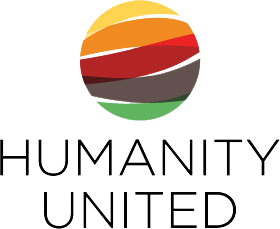At the heart of the Fair Hiring Toolkit is material designed with social auditors in mind. This includes assessment tools and resources relevant for internal and self-assessments, third party audits and independent verification and certification. These tools can be used by in-house auditors, brands, supply chain consultants and third party auditors. They are designed to be relevant in different sectors and industries, and in workplaces of all sizes.
Verité also offers the following questions that auditors can consider in evaluating their own approaches to issues of forced labor and human trafficking in global supply chains.
KEY QUESTIONS FOR SOCIAL AUDITORS AND CERTIFIERS
Social auditing can be improved with a broader and deeper focus on the issues of human trafficking and forced labor, and the unique circumstances facing migrant workers. Social auditors and certifiers can help eliminate forced labor by integrating auditing procedures that better identify risks and vulnerabilities before they turn into abuse. Consider the following questions:
- Do you have a comprehensive approach for identifying the red flags of trafficking and forced labor during the audit process?
- Do you review company policies and practices related to recruitment and hiring, in particular for migrant workers?
- Do you audit the labor recruiters used by suppliers?
- Do you have a targeted interview process for migrant workers?
- Do you monitor the recruitment fees charged to migrant workers and the risks they face of debt bondage?
Below is a list of tools within the Fair Hiring Toolkit that we gathered for their relevance to Social Auditors & Certifiers.
BRANDS AND SUPPLIERS – RAISING AWARENESS AND BUILDING CAPACITY
Brand policies and supply chain codes cannot be effectively implemented unless the issues they address are fully understood by management and staff. A company that is well-trained and informed will be in a strong position to successfully translate new policies into effective and sustainable practice.
Awareness raising and capacity building are among the key strategies used by companies to implement codes of conduct. The Fair Hiring Toolkit supports these efforts, providing two key tools that help brands and suppliers better understand the risks they face and the unique vulnerabilities of migrant workers. These tools include a set of “red flags” that identify common forms of abuse and deception in recruitment, and an introduction to recruiter-induced exploitation covering the salient points for business. These tools can help auditors better understand a form of exploitation that is often hidden from view and identify cases of abuse where and when they occur. Both tools can also be effectively integrated into auditor training programs.
WHAT SHOULD YOU LOOK FOR?
IDENTIFYING BRAND RISK AND VULNERABILITY TO HUMAN TRAFFICKING AND FORCED LABOR OF MIGRANT WORKERS.
This tool provides a complete set of indicators or “red flags” of recruiter-induced forced labor. It translates Verité’s global research on human trafficking into a clearly defined set of problems that brands should be aware of and civil society groups should be on the look out for. These are common forms of abuse that face migrant workers in the global economy and that may indicate or enable conditions of trafficking for forced labor. See Toolkit for Brands>Step 2: Tool 1
UNDERSTANDING RECRUITER-INDUCED FORCED LABOR
To tackle this issue effectively, brands and other supply chain actors – including social auditors – need to fully understand the complexities of recruiter-induced forced labor. This tool meets this need by providing an introduction to the topic that includes:
- A discussion of the global scope of the problem;
- The legal definitions of forced labor and human trafficking found in international Conventions;
- An examination of the respective roles played by recruiters and employers in driving or exacerbating abuse; and
- A consideration of the case for taking action and establishing protections for migrant workers.
See Toolkit for Brands>Step 2: Tool 2
BRANDS – STRENGTHENING ASSESSMENTS AND SOCIAL AUDITS
Social audits are the primary tool used by brands today to assess supply chain compliance, and detect violations and abuse. Many social auditors, however, are not properly equipped or trained to identify forced labor or to facilitate the corrective action needed to deal with it effectively.
The Fair Hiring Toolkit addresses this challenge by providing five critical tools mirroring the methods used by social auditors in a standard social audit. These tools include:
- A guide to auditing forced labor and the trafficking of migrant workers;
- Management, worker and recruiter interviews; and
- Guidance for reviewing supplier and recruiter documentation.
Auditors need new assessment strategies and protocols as they tackle the issues of forced labor and the protection of migrant workers. These tools can help them meet this need.
The set of tools in this section can all be found in the Toolkit for Brands>Step 3. Strengthening Assessments and Social Audits>>>
GUIDANCE FOR THE SOCIAL AUDITING OF FORCED LABOR AND HUMAN TRAFFICKING OF MIGRANT WORKERS
Auditing forced labor can present a number of challenges for brands and third party auditors, not least because this abuse is often hidden and deception is its key feature. This tool provides auditors with general tips on improving the effectiveness of audits, including technical guidance on interviewing managers, workers and recruiters, and reviewing company documents. This guide provides the general framework for other materials provided in this section. See Toolkit for Brands>Step 3: Tool 1
GUIDANCE FOR AUDITORS ON CONDUCTING INTERVIEWS WITH MANAGERS
The management interview tool provides auditors with guidance on speaking to supplier managers about migrant and foreign contract workers. It recommends discussing the profile of migrant workers in the facility, the selection process used for screening and contracting recruiters, and supplier oversight of the recruitment process. It also addresses key forms of abuse linked to recruitment fees and expenses, passport retention, wage deductions and deception in contracts of employment, among other issues. Review this tool to learn more about how auditors can improve their interviews with management. See Toolkit for Brands>Step 3: Tool 3
GUIDANCE FOR AUDITORS ON CONDUCTING INTERVIEWS WITH MIGRANT AND FOREIGN CONTRACT WORKERS
Like the management interview, this tool provides auditors with recommendations on improving their interviews with migrant and foreign contract workers. It sets out the topics that auditors should discuss and explains the rationale for doing so. Migrant workers are a key source of information about recruitment and hiring practices; yet many auditors aren’t asking the right questions or probing the right issues. This tool addresses these needs. See Toolkit for Brands>Step 3: Tool 4
GUIDANCE FOR AUDITORS ON CONDUCTING LABOR RECRUITER INTERVIEWS
Recruiter interviews are not typically integrated into social auditing procedures. This Toolkit, however, argues that genuine supply chain compliance begins with fair hiring and recruitment. As such, where they are used, recruiters must be included in the audit process and other forms of supply chain assessment.
This tool is a guide for interviewing recuiters. It recommends discussing the profile of the agency and its business; the profile of migrant workers sent to brand suppliers; the recruitment and hiring process used; and other issues such as fees and expenses, contractual arrangements, and passport retention. The guide can be used to greatest effect alongside the tool “Key Issues to Include in Monitoring the Performance of Labor Brokers”, which sets out a framework for auditing recruiters. See Toolkit for Brands>Step 3: Tool 2
GUIDANCE FOR REVIEWING DOCUMENTS
The Toolkit also provides guidance on improving the review of supplier and recruiter documentation to better address the risks facing migrant workers. It recommends cross-checking information gathered from workplace interviews with information gathered from wage slips, company policies, contracts of employment, written grievances and other materials. This review helps auditors gain a clearer picture of working and employment conditions, and sheds light on the relationship between suppliers, their recruiters and migrant workers. See Toolkit for Brands>Step 3: Tool 5
SUPPLIERS – MANAGING LABOR RECRUITERS AND MONITORING FOR ETHICAL RECRUITMENT AND HIRING
Once a labor recruiter has been screened, selected and hired, suppliers need to put in place clear procedures to manage and monitor their performance against contractual and social responsibility obligations. Recruiter audits should be a key part of this process.
Developing methods to monitor recruiter performance is a critical step, but the result of this process is likely to be highly individualized based on the structure and operations of each supplier. This tool recommends a system of verification that involves triangulating information drawn from several different sources:
- Recruiter managers and personnel;
- Jobseekers/Deployed workers;
- Relevant documents;
- Recruiter clients (employers); and
- External stakeholders, including NGOs and government licensing agencies.
This system sets out a framework for recruiter audits that can be used by auditors at any level of the supply chain.
MONITORING THE PERFORMANCE OF LABOR RECRUITERS: INTRODUCTION AND KEY ISSUES OF CONCERN
Only a full recruiter audit will reveal the true picture of recruitment and hiring practices, and conditions facing migrant workers. This tool outlines a labor recruiter assessment process and provides instruction on the information to gather and how to use it. It recommends assessing six key topic areas:
- Recruiter profile, business and services;
- Management and organizational culture and values;
- Managing the recruiter supply chain;
- Recruitment, selection and hiring processes;
- Recruitment fees; and
- Other recruiter services.
Use this tool to greater effect alongside the recruiter and migrant worker interview tools provided here.

For Brands
Framework for Action: What Can Brands Do? >>
1. Improving Codes of Conduct and Company Policies >>
2. Raising Awareness and Building Capacity >>
3. Strengthening Assessments & Social Audits >>
4. Taking Corrective Action & Developing Systems Improvement Plans >>
5. Reporting & Transparency >>
6. Multi-Stakeholder & Multi-Brand Engagement >>
7. Public Policy Advocacy >>
For Suppliers
Framework for Action: What Can Suppliers Do? >>
1. Improving Codes of Conduct & Company Policies >>
2. Raising Awareness & Building Capacity >>
3. Screening & Evaluating Labor Recruiters >>
4. Managing Labor Recruiters & Monitoring for Ethical Recruitment & Hiring >>
5. Ensuring Good Practice in Human Resources Management >>
6. Establishing Effective Grievance Mechanisms & Protection for Whistleblowers >>
7. Taking Corrective Action & Developing Systems Improvement >>
